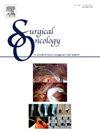Optimizing oncological and functional outcomes with wide resection techniques in robot-assisted radical prostatectomy for very high-risk prostate cancer: A single-institution retrospective study
IF 2.4
4区 医学
Q3 ONCOLOGY
引用次数: 0
Abstract
Objectives
To assess our wide resection robot-assisted radical prostatectomy techniques in very high-risk prostate cancer.
Methods
Among 600 patients, we identified 63 patients with localized or locally advanced very high-risk prostate cancer (cT3b-T4, primary Gleason pattern 5, multiple high-risk features, or ≥5 positive biopsy cores with Grade Group 4–5 pathology) undergoing wide resection robot-assisted radical prostatectomy following six months of vintage hormonal therapy between 2019 and 2023. Clinical staging included digital rectal exams, magnetic resonance imaging, computed tomography, and bone scintigraphy.
We assessed the effectiveness of our wide resection techniques in reducing PSM rate by evaluating the perioperative, pathological, and oncological outcomes.
Results
The overall PSM rate was 19% (6.7% for pT2, 9.1% for pT3a, and 47% for pT3b). The most frequent site for extracapsular extension was the lateral side (30%), followed by the bladder neck (26%). The bladder neck was the most common location of PSM (59%).
Over a median follow-up of 18.7 months, patients without PSMs had a 46% higher 2-year prostate-specific antigen-free survival rate than those with PSMs. One patient experienced Clavien–Dindo grade Ⅲa deep vein thrombosis, and 51% achieved immediate continence. A limitation of this study was the use of vintage hormonal therapy and conventional imaging modalities.
Conclusions
Our study demonstrated that wider bladder neck dissection, rather than wider apical dissection, can achieve acceptable short-term functional and oncological outcomes. Future studies with longer follow-up are warranted to assess effectiveness of wide resection for local cancer control in very high-risk prostate cancer as a part of a multimodality strategy.
机器人辅助根治性前列腺癌大范围切除技术优化肿瘤和功能预后:一项单机构回顾性研究
目的探讨机器人辅助前列腺根治术在高危前列腺癌中的应用价值。方法在600例患者中,我们确定了63例局限性或局部晚期高危前列腺癌患者(cT3b-T4,原发性Gleason模式5,多重高风险特征,或≥5个阳性活检核心,4-5级病理),在2019年至2023年期间接受了6个月的激素治疗后,接受了机器人辅助的广泛切除根治性前列腺切除术。临床分期包括直肠指检、磁共振成像、计算机断层扫描和骨显像。我们通过评估围手术期、病理和肿瘤结果来评估广泛切除技术在降低PSM发生率方面的有效性。结果总PSM率为19% (pT2为6.7%,pT3a为9.1%,pT3b为47%)。最常见的囊外延伸部位是膀胱外侧(30%),其次是膀胱颈部(26%)。膀胱颈部是PSM最常见的部位(59%)。在18.7个月的中位随访中,无psm患者的2年无前列腺特异性抗原生存率比有psm患者高46%。一名患者经历了Clavien-Dindo级Ⅲ深静脉血栓形成,51%的患者获得了立即尿失禁。本研究的一个局限性是使用老式激素治疗和传统成像方式。结论我们的研究表明,更宽的膀胱颈清扫,而不是更宽的膀胱根尖清扫,可以获得可接受的短期功能和肿瘤预后。未来的研究需要更长的随访时间来评估作为多模式治疗策略的一部分,广泛切除对高危前列腺癌局部肿瘤控制的有效性。
本文章由计算机程序翻译,如有差异,请以英文原文为准。
求助全文
约1分钟内获得全文
求助全文
来源期刊

Surgical Oncology-Oxford
医学-外科
CiteScore
4.50
自引率
0.00%
发文量
169
审稿时长
38 days
期刊介绍:
Surgical Oncology is a peer reviewed journal publishing review articles that contribute to the advancement of knowledge in surgical oncology and related fields of interest. Articles represent a spectrum of current technology in oncology research as well as those concerning clinical trials, surgical technique, methods of investigation and patient evaluation. Surgical Oncology publishes comprehensive Reviews that examine individual topics in considerable detail, in addition to editorials and commentaries which focus on selected papers. The journal also publishes special issues which explore topics of interest to surgical oncologists in great detail - outlining recent advancements and providing readers with the most up to date information.
 求助内容:
求助内容: 应助结果提醒方式:
应助结果提醒方式:


